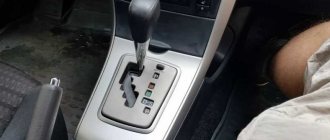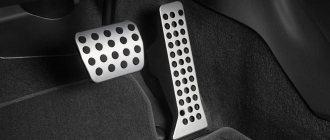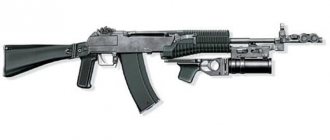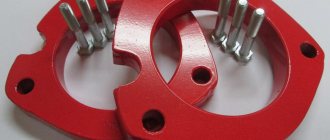Many owners of cars with automatic transmission do not even realize that towing a car with an automatic transmission with the engine not running can lead to car damage. Moreover, the number of such vehicles has been growing exponentially in recent years.
We’ll talk about how to tow a car with an automatic transmission so as not to harm it, what features this type of vehicle has and whether it can be used as a towing vehicle, we’ll talk in this article.
Differences between manual transmission and automatic transmission when towing
The differences between manual transmission and automatic transmission when towing are due to the characteristics of the two types of transmission. Since manual and automatic transmissions have different structures and operating principles, they operate in different modes when towing.
- With a manual transmission, when the lever is in neutral, only one gear rotates when towing.
- In a car with automatic gear shifting, the transmission operates in normal mode, that is, all clutches, drums, shafts and gears rotate. Therefore, when towing with the engine turned off, the unit is starved of oil, leading to negative consequences for the transmission.
For this reason, transporting such a vehicle is much more difficult than a car with a manual transmission.
Is it possible to tow a car with an automatic transmission?
There is no definite answer to this question, since much depends on the specific car model, the type of automatic transmission and the manufacturer’s recommendations.
Many of them recommend exclusively a tow truck as a means of transporting cars with automatic transmissions. There is also a dependence on the type of automatic transmission, the number of gears in it, the type of drive and other conditions.
Therefore, in the question of whether it is possible to tow a car with an automatic transmission, it is better to use the operating manual for a specific vehicle.
However, if in desperate situations there is an extreme need for towing, then in order not to damage the car, you should follow the rules, which will be discussed below. If followed, this procedure should not cause much harm.
Tips and recommendations from experienced car owners
Experienced drivers advise pouring an extra liter of oil into the transmission before towing a car with an automatic transmission. This will provide additional lubrication of the elements and prevent them from overheating and damage.
If you intend to tow one car with another with rear-wheel drive, according to experts, for ideal conditions, you should disconnect the automatic transmission from the drive wheels, for which experts recommend removing the driveshaft. If this is not possible, the rear axle must be suspended.
Most experts do not recommend towing vehicles with all-wheel drive. The best solution if it is necessary to transport them is to call a tow truck, however, if in the end this kind of possibility is not possible, then one of the bridges must be hung up; a traditional hitch cannot be used.
In general, transportation with an automatic transmission in tow can be quite safe for the transmission if you follow the manufacturer's recommendations and the advice of experienced specialists.
( 5 ratings, average 5 out of 5 )
Why can't you tow a car with an automatic transmission?
Many car owners have no idea under what conditions and why they cannot tow a car with an automatic transmission, since they have no idea about the processes occurring in the automatic transmission during forced transportation.
Since the oil pump does not work when the engine is turned off, the operating mechanism in the gearbox experiences oil starvation: the unit does not properly cool, and increased friction leads to rapid wear of parts and can even lead to gear wedges or failure of fluid couplings and bearings.
Therefore, towing a car with an automatic transmission with the engine turned off is usually prohibited by the manufacturer.
Towing conditions and its availability are usually described in the vehicle's owner's manual. If an urgent need arises, but the manual is not at hand, then there are certain rules that need to be remembered.
As a rule, towing a car with an automatic transmission is prohibited:
- for all-wheel drive vehicles;
- if the level of transmission oil (ATF) in the gearbox is insufficient;
- Towing with a soft hitch is not allowed, since sharp shocks when driving with a soft hitch have an extremely negative impact on the car.
Is it possible to tow a car automatically: towing rules
As a rule, a car with an automatic transmission can be towed, but there are several restrictions. When the engine is running, a pressure oil supply system begins to operate in the automatic transmission, which delivers ATP fluid to all rubbing mechanisms.
- Firstly, tow the car automatically at a minimum speed of no more than 50 mph;
- Secondly, the car must be towed over a short distance - up to 40 km. In fact, within the city limits it is quite possible to tow such a car to the nearest service station.
Towing a car with an automatic transmission while the engine is running is also possible. When you start the engine of a car with an automatic transmission, the oil pump will start working, as a result of which the oil pressure in the automatic transmission will be maintained constantly, while the power steering and braking system will operate.
In this case, the car can be towed automatically over fairly long distances. The only thing is a breakdown in the automatic transmission itself, due to which the car “does not drive.” In this case, a running internal combustion engine can lead to even more serious consequences for the gearbox.
It should be remembered that when towing a car with an automatic transmission (both with the engine switched off and running), the gear selector lever must be in the “N” (neutral) position. When the engine is not running, to switch the selector lever to the “N” position, use a special gearbox unlock button located on the gearbox selector.
Is it possible to pull a car automatically?
Quite often situations arise when an automatic car needs to be towed by another car. This is possible, but it must be remembered that automatic transmission does not like overloads and overheating.
It turns out that the decision to tow another car in a car with an automatic transmission involves moving a heavily loaded car (similar to driving with a trailer). If such a need arises, the driver of an automatic car when towing another car must adhere to the following rules:
- The movement of a car with an automatic transmission towing another car must be at a minimum speed, avoiding overheating of the torque converter;
- Acceleration of the car should be smooth, without sudden acceleration. When towing, it is better to avoid activating the kick-down mode, and also block the automatic transmission from shifting to higher gears by disabling the overdrive mode (if such a function is available).
If the car slips heavily, the fluid in the torque converter may overheat. Overheated ATF fluid loses its properties, the transmission begins to malfunction, the pressure drops, clutches slip and then burn, mechanical wear products contaminate the automatic transmission, etc.
Towing a car with automatic transmission
For forced transportation of a vehicle with an automatic transmission, strict rules must be followed to avoid automatic transmission breakdown and costly repairs.
The rules for towing a car with an automatic transmission are as follows:
- The weight of the towing vehicle must be higher than that of the towed vehicle. Moreover, the greater the difference in favor of the tug, the better.
- First, you need to check the transmission fluid level and, if there is a deficiency, bring it to the maximum possible.
- The choice of coupling method is one of the main factors in the safe towing of a car with an automatic transmission. A rigid hitch should be used to avoid shocks during movement. If it is possible to tow only with a soft hitch, then you need to make sure that the brakes and sound signal are working correctly.
- To unlock the steering wheel, turn the ignition key and start the engine.
- Place the gearbox selector in the neutral “N” position.
- It is necessary to monitor the temperature of the transmission and, if necessary, take breaks while driving.
The speed during forced transportation and the distance over which the vehicle can be towed depends on the number of gears in the box.
In this case, the so-called “5×5” rule or its variations (3×3, 4×4) applies:
- with a 3-speed automatic – 30 km/h and a distance of 30 km;
- with a 4-speed - 40 km/h and 40 km;
- with a 5-speed - 50 km/h and 50 km, etc.
As you can see, the distance and speed of movement is determined very simply: you need to multiply the number of gears in the box by 10. The resulting numbers will be the limitation.
The time of towing and “rest” is of the same importance: for every 50 minutes of movement, it is necessary to give the towed vehicle 50 minutes of “rest” so that the box cools down.
Sequence of actions when towing a car with automatic transmission
The driver’s main rule in any emergency situation is not to lose composure and try to analyze the current situation objectively, without panic. It’s good if an experienced professional is nearby and real driver solidarity is shown - then the likelihood of making a mistake will be negligible. To find out how to properly tow a car, you need to take into account all the practical advice from outside and the corresponding guidelines in the instructions of both cars - both the towed one and the one acting as a tractor. Estimate where the car needs to be pulled, the distance and speed at which the damaged car will be moved. In practice, often both drivers draw up a clear plan for joint, coordinated efforts to act in unison. Determine the degree of risk: if they are high, you should consider calling a tow truck. Such a solution may sometimes turn out to be more expensive, but it is the most optimal.
Towing a car with an automatic transmission with the engine not running
If for some reason it is not possible to start the engine, then towing a car with a non-working engine is preferable using a tow truck.
In this case, you can either completely load the vehicle onto the platform, or carry out partial loading with the front or rear axle hanging.
The same rules apply when towing a four-wheel drive vehicle with an automatic transmission: it is better to immediately call a car tow truck to avoid breakdowns.
If it is not possible to call a tow truck, or the cost is prohibitively high, then you can try to transport the vehicle with the engine turned off.
The transportation rules in this case are similar to towing a car with the engine running:
- Add transmission oil to the top.
- We use an exclusively rigid coupling; it is advisable to use a trolley with a partial load and one of the bridges hanging out.
- Move the selector to position “N”. In some cars, the selector may be locked when the engine is turned off, then you will have to remove the lock plug, press on it with a screwdriver and move the selector to the desired position.
- You need to monitor the level and temperature of the transmission oil and stop to rest if necessary.
- Movement speed - the lower the better. The recommended driving mode is up to 40 km/h.
However, even if such conditions are met, there is no guarantee that the box will not fail, so towing in this mode is an exceptional measure and should be used in case of emergency.
conclusions
Organizing the forced transportation of a car with an automatic transmission is much more difficult, since due to its design features such a car is much more susceptible to breakdowns during towing.
However, you can also tow a car with an automatic transmission, subject to several conditions:
- you need to monitor the level and temperature of the transmission oil;
- towing is carried out exclusively in the “N” (neutral) position of the selector;
- it is necessary to use a rigid coupling;
- it is required to comply with the speed limit and maximum distance (50×50 rule);
- To tow all-wheel drive vehicles with automatic transmission, only a tow truck is used.
If these conditions are met, towing should not cause significant damage to the vehicle or lead to gearbox failure.











